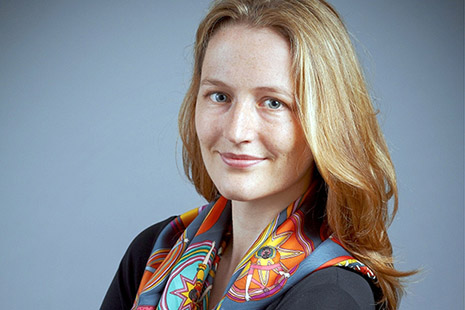The Registrar’s Manual for Detecting Forced Marriages
By Sophie Hardach | Simon & Schuster | $29.99
SOPHIE Hardach’s debut novel, The Registrar’s Manual for Detecting Forced Marriages, includes several pages of notes, references and acknowledgements that roll past at the end of the book like the credits on a film. There are no set designers or best boys electric – the resemblance to cinema does not extend that far – but there are quite a few names all the same. “It takes many people to write a novel,” says Hardach by way of explanation, “especially one set in different countries and communities.” And the novel does indeed cover a lot of territory – from Kurdistan to Paris and many points in between. Clearly a lot of background work is required to get these different settings, and their attendant manners and mannerisms, just right. There is a risk, though, that the seams will show, that the kind of “making of” information that Hardach provides will reinforce the idea of a novel that has been assembled – or, more fashionably perhaps, curated – rather than written.
It is all the more impressive that the process that Hardach describes in her endnotes, of research and interviews and repeated field trips and the snippets of cultural or linguistic interest provided by friends, results in such a distinctively individual take on one of the most vexed questions of the age – mass immigration, and the plight (the very word seems to despair of a solution) of refugees. The narration alternates between the third person and the voice of a young woman, brought up in Germany and now working in the bureaucracy of a mairie in Paris, who has her suspicions about a forthcoming wedding. Is it the real thing, or is a Kurdish girl being coerced to marry against her will? “The Registrar’s Manual for Detecting Forced Marriages,” prepared by her predecessor, is no real help.
At first it is not clear what lies behind her concern. Conscientiousness, perhaps, a determination to follow the rules. After all, forced marriages, the manual says “in big bold letters,” are illegal in France. It becomes progressively more apparent that it is all a bit more complicated than that. The wedding, and whether or not it should be allowed to go ahead, revives memories of someone she once knew. We have been introduced to Selim in the first sentence of the novel, a Kurdish boy swimming through sewage to reach the coast of Italy. Arriving in Germany without papers, he is declared, after dental and other examinations, to be thirteen years old, and allocated a birthday. When his eighteenth birthday comes around, though, he is likely to be deported, unless he can find a reason why he should be allowed to stay. Like marriage.
The woman who works in the town hall in Paris, preparing the paperwork for forthcoming marriages and trying to ascertain whether or not they are “real,” has herself been married, under a false if not forced arrangement. As a schoolgirl in Germany, she agreed to marry Selim, as a way of ensuring he can stay. The question of whether this marriage, which involves years of subterfuge and pretence in order to keep the authorities at bay, is “real” or not, is never asked directly, but is left to bubble along underneath a world in which cultures mix and re-mix and where nothing is straightforward. “As if we could tell whether a marriage was real,” says Sandra, who also works in the mairie. “I can’t even tell whether my own is.”
This is a picture of a Europe in which everyone is mashed up with everyone else, moving with varying degrees of confidence and fluency from language to language, latching on to cultural roots and customs that they don’t quite remember or indeed have any meaningful connection to, and which in any case may not, rather in the way of their marriages, be real. Everyone seems to be an immigrant of some kind, whether it be the narrator’s Paris friends who all went to international schools and “grew up in a sort of geographical limbo,” or the people Selim meets in the refugee camps, the “nameless Liberians who were really Nigerians, and stateless Palestinians who were really Egyptians.” The essential difference is between the privileged ones who can move freely across borders, and those who, like Selim, must do so by stealth.
In search of the truth about forced marriages, the narrator consults the head of the Ligue pour la Défense des Droits de la Femme. The two women take a walk by the canal, where “the hip young interns from the advertising companies and tech start-ups… were sitting on the bank, legs dangling over the water.” A few pages on, some Afghan boys are “bathing their feet in the canal,” passing the time before making the break for Britain. The Registrar’s Manual for Detecting False Marriages links these two kinds of nomads together to show, with originality and wit, that the differences are as much ones of circumstance as anything else. •




